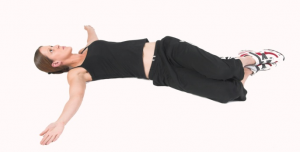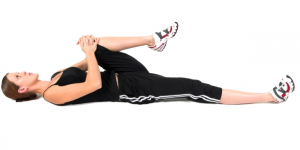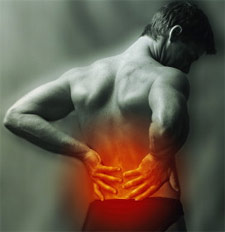 Lower Back Pain (LBP) is one of the most prevalent conditions we see at Bodysmart and most people throughout their life will experience back pain in some way shape or form.
Lower Back Pain (LBP) is one of the most prevalent conditions we see at Bodysmart and most people throughout their life will experience back pain in some way shape or form.
The Lumbar spine (L1-5) is frequently involved in back pain, as these vertebrae carry the most of our body weight and receive the largest stresses along the spine. The most common injuries to the lower back include disc herniations, ligament and muscle strains, pinched nerves and facet joint injuries.
So what are the steps you can take to help prevent or decrease the likelihood that you will suffer from lower back pain?
LBP can be caused by a few different things, but commonly we see this as a result of three things:
- A generalized tightness throughout the back, hip and leg musculature as a result of poor posture and decreased activity
- Stiffness of the joints in the lumbar spine, sacroiliac joints and hips
- Weakness of “core” muscles or stabilizing muscles of our spine
- With relatively sedentary lifestyles and sitting at a desk and computer for 8-10 hours a day, our muscles become stiff through lack of natural stretch being placed on them. With this lack of stretching, the muscles shorten and reduce the range of motion available at the joints that they attach too. The muscles that support our spine also become weak through lack of use.
It is important to note that if you experience back pain with constant pins and needles, numbness or weakness in your legs, you should attend physiotherapy or an appointment with your general practitioner immediately. These symptoms are a sign that your nerves are being compromised and immediate steps need to be taken to reduce these symptoms.
We have compiled 10 top tips for reducing lower back pain:
- Maintain a good postural position.
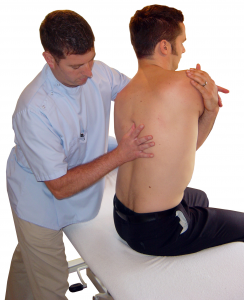
Whether this is when sitting at your desk at work or standing, be aware of how you are holding your body. Relax any tension you are holding in muscles around your neck, shoulders and lower back. Try and maintain the spine’s natural curves when sitting by placing the lumbar support of your chair in your lower back, this will help you sit in an upright position. To help here, we have a great range of lumbar supports on display at Bodysmart. - Lift properly – Bend the knees not the back!!
When you are lifting loads, use your knees to bend down to the object, then pick up and straighten the knees while maintaining the back in a neutral position. This will reduce stress to the muscles and joints of the lumbar spine. - Minimise the height of your surrounding objects.
Maintain your work and reading materials at a height that ensures your neck stays in a neutral position – one that is not looking down or looking up but straight ahead. - Ensure you are sleeping in a good position.
Sleeping on your tummy should be avoided as it places undue stress on both the neck and the lower back. Your pillow height and structure is very important and they should support you in a neutral position where your neck muscles can remain relaxed. Bodysmart generally recommends a quality foam contour pillow and a firm mattress. - Reduce your stress – trial relaxation techniques.
Ensure you keep stress levels low as this is a major contributor to LBP. Trial relaxation techniques, like meditation or even taking a walk at lunch time away from your workstation. - Maintain a healthy weight.
Increase in body weight increases the stress placed on the muscles and joints in your lower back. Integrate more cardiovascular exercise into your week
(e.g. walking/cycling) and reduce the amount of fat you have in your diet. - When exercising, know the difference between exertion and pain.
It is good to feel exertion or fatigue in your muscles and lungs when you are exercising, but it is important to stop when you feel pain. Heavy weights that are causing you to experience pain in your lower back could be causing damage. - Strengthen your abdominal muscles.
The abdominal muscles – including Transverse Abdominus (TA) or “Core” as they are commonly known as and your Obliques, are very important in maintaining the stability and supporting your spine. A physiotherapist is able to prescribe you appropriate exercises that will help to strengthen these muscles and ensure there is minimal strain in your back. Bodysmart’s Physiotherapist run Pilates classes are a great way to improve the strength of your TA muscles. - Take a break – get up and MOVE!
Don’t sit at your desk for 8-10 hours a day a not get up! We recommend every 1-2 hours at a minimum to get out of your chair walk around the office and STRETCH. Look over your shoulders, bend down to the floor, hands on your hips and arch back – these are all simple stretches that will reduce the stiffness in your muscles. - Perform back strengthening exercises and stretches.
In order to keep your stabilizing system of your spine fit and healthy we should regularly stretch our muscles and do exercises that will enhance their strength. The following are some general basic stretches that you can started today:
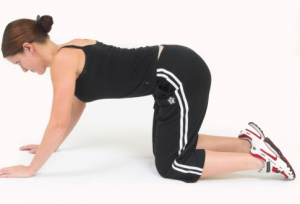
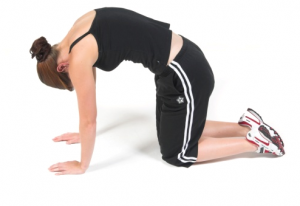
Cat stretch: Get down on your hands and knees. Tuck your chin in, push through your arms and curl up the spine like the reverse U shape, then slowly bring the chest and belly button down towards the floor like a bridge.
Back rotation: Lie down on your back and bend both knees up. Bring the knees side to side while keeping your shoulders and shoulder blades flat on floor.
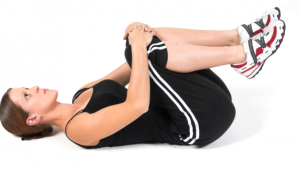
Knees to chest: Lie on your back and bring your both knees towards your chest. Feel the stretch on your lower back and bottom and count 5 breaths.
Piriformis: Bring one knee to the opposite shoulder while keeping the other leg straight and heel on floor. Hold the position for 5 breaths.
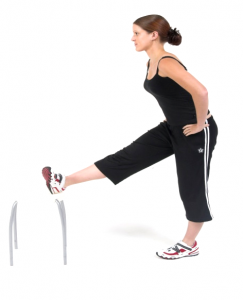
Hamstrings: One leg up on stool, bring your chest towards the leg while tightening your buttock and keeping back straight. Feel the stretch on the back of your thigh and count 5 breaths.
If you are concerned regarding any LBP symptoms that you are experiencing, would like an assessment of your back or would simply like to know more, seek a consultation with one of our physiotherapists or chiropractors today. They can give you further advice, provide hands on treatment and prescribe you with specific stretches and strength exercises which will help to improve the health of your spine.
Contact Bodysmart Health Centre today
This article was written by Lee Anne Flugel, one of Bodysmart’s Senior Physiotherapists.


